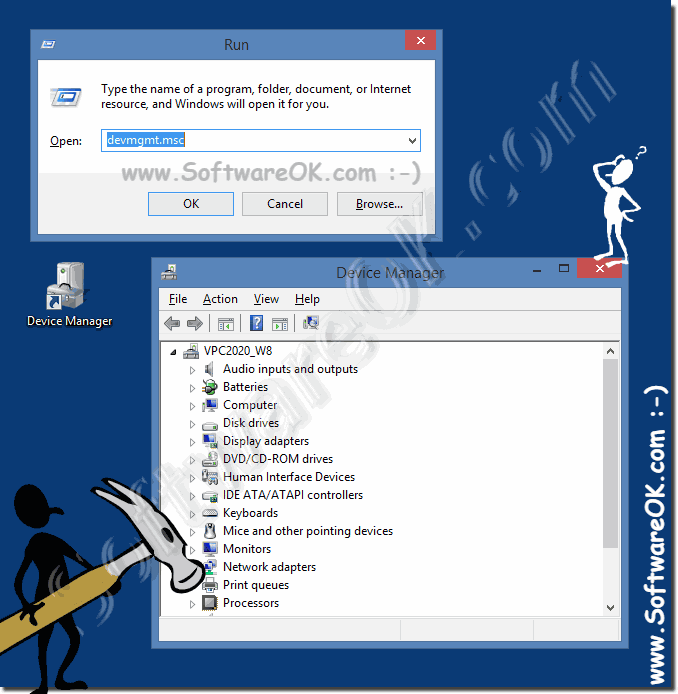
- #Windows 10 open device manager as admin how to#
- #Windows 10 open device manager as admin install#
- #Windows 10 open device manager as admin manual#
- #Windows 10 open device manager as admin code#
#Windows 10 open device manager as admin how to#
How to Access Device Manager using the Settings app?.How to Open Device Manager via Run command?.

#Windows 10 open device manager as admin manual#
Checking on the device has the least lag between when you apply the custom setting and when you get it on the device because you can run a manual sync. You can confirm that an app you deployed through a custom setting was installed on a device in several ways. For devices that aren't connected, the app is installed the next time the device is connected. The app is installed on users' devices within 3 hours if the device is connected to the internet.

For example, ".įor example, the OMA-URI string for 7-Zip is. The product ID is an alphanumeric string in brackets.
#Windows 10 open device manager as admin code#
In PowerShell, run PathToScript\Get‑MSIFileInformation.ps1 ‑Path PathToFile ‑Property ProductCode, where PathToScript is the location of the PowerShell script and PathToFile is the path to the MSI installation file.įor example, if you save the PowerShell script in your Desktop folder, to get the product code for 7-Zip, run C:\Users\ username\Desktop\Get‑MSIFileInformation.ps1 ‑Path C:\Users\ username\Downloads\7z1900‑圆4.msi ‑Property ProductCode.$Value = $Record.GetType().InvokeMember("StringData","GetProperty",$null,$Record,1) $Record = $View.GetType().InvokeMember("Fetch","InvokeMethod",$null,$View,$null) $View.GetType().InvokeMember("Execute", "InvokeMethod", $null, $View, $null) $View = $MSIDatabase.GetType().InvokeMember("OpenView","InvokeMethod",$null,$MSIDatabase,($Query)) $MSIDatabase = "SELECT Value FROM Property WHERE Property = '$($Property)'" $WindowsInstaller = New-Object -ComObject WindowsInstaller.Installer Copy the following PowerShell script into a text editor and save it as Get-MSIFileInformation.ps1.Record the hash value, which is the 64-character string returned in PowerShell.įor example, if the 7‑zip MSI file is in your Downloads folder, run Get‑FileHash ‑Path C:\Users\ username\Downloads\7z1900‑圆4.msi ‑Algorithm SHA256 To get the file hash, run Get‑FileHash ‑Path PathToFile ‑Algorithm SHA256, where PathToFile is the path to the app installation file.Note: The app installation file must be available either from the vendor's website or a server location accessible by http, https, or ftp protocol where your IT admin hosts the file.įor example, you could download the 7‑Zip installation file from. On your Windows device, download the MSI file you want to deploy.To create the XML file, you need the URL of the app, the file hash, and the product ID. Step 1: Get required app details and create the XML file You specify the app MSI file location in an XML file that you set as the value of the custom setting.
#Windows 10 open device manager as admin install#
You can install software on Windows devices enrolled in Windows device management by adding custom settings in the Google Admin console. Supported editions for this feature: Frontline Business Plus Enterprise Education Standard and Education Plus Cloud Identity Premium.


 0 kommentar(er)
0 kommentar(er)
